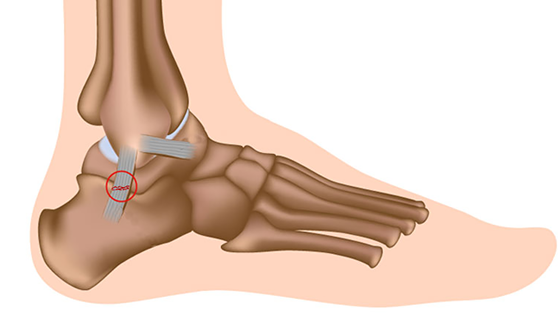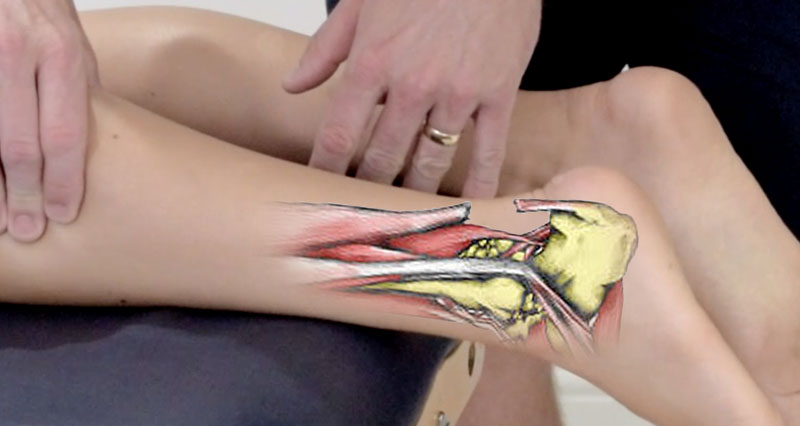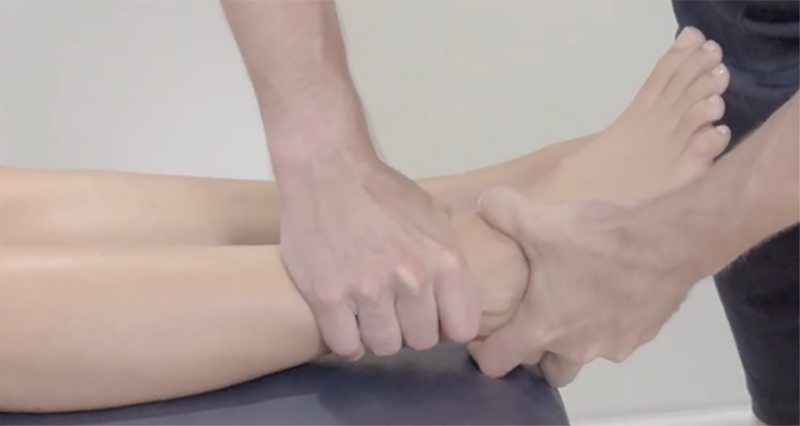The Talar tilt test assesses the stability of the ankle joint, specifically the calcaneofibular ligament (CFL) which connects the calcaneus (heel bone) to the fibula. We use it to help diagnose ankle sprains.
What is an ankle sprain?
An ankle sprain typically happens when your foot turns inward under your body’s weight, causing immediate pain. The most common type, an inversion sprain, occurs when the ankle rolls outward as the sole turns inward, damaging the outer ligaments.
Eversion sprains, less frequent, involve the ankle rolling inward and are often associated with a fibula fracture. Mild sprains may affect one ligament, while severe ones can damage multiple.

How to perform the talar tilt test
Position the patient either seated or lying down with their knee bent at 90 degrees. Hold the lower leg steady and grasp the patient’s heel. Apply a force to tilt the heel inward while keeping the ankle joint stable. Make sure the foot remains level without moving up or down.
Evaluating the talar tilt test

Watch how much the heel tilts laterally compared to the shin bone. If there’s excessive tilt relative to the unaffected side, it might suggest ligament damage or weakness. Always use this test along with other assessments and imaging to fully evaluate ankle stability.
Considerations
Ensure this test is conducted alongside other diagnostic assessments and imaging techniques for a comprehensive evaluation of ankle stability. Note that excessive heel tilt could signify ligamentous injury or laxity.




